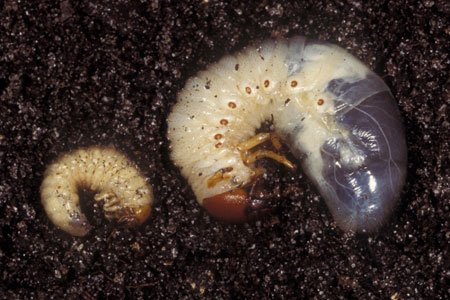
Grub worms, often found lurking beneath the soil in gardens and lawns, are the larvae of certain beetle species. They can be a nuisance, but they also play a vital role in the ecosystem. So, understanding their behavior during winter can help us better manage our gardens and lawns. Let’s explore how these critters deal with the colder months.
What Are Grub Worms?
Before we discuss whether grub worms hibernate, let’s get to know what they really are. Grub worms are the immature form of beetles, particularly from the Scarabaeidae family, which includes species like the Japanese beetle or the June bug. These larvae are typically C-shaped, soft-bodied, and white, with a brown head. You might find them digging through the soil, munching on plant roots, and contributing to nutrient cycling.
Grub worms thrive in damp, organic-rich soil, where they can easily feed on decaying matter. While they seem harmless enough in their larval state, they can wreak havoc in gardens, as they feast on the roots of grass and plants. When left unchecked, a lawn could end up looking more like a patchy hay field!
Do Grub Worms Hibernate?
You’re probably wondering, do grub worms actually hibernate during winter? The short answer is yes, but it’s not quite like how bears hibernate. Grub worms enter a phase called diapause, which is a state of suspended development triggered by environmental changes such as temperature and daylight.
During diapause, grub worms become inactive and stop growing. They don’t necessarily “sleep” in the way we think of hibernation. Instead, they just slow down their metabolism and burrow deeper into the soil, where it’s warmer. This strategy helps them avoid freezing temperatures and ensures they can survive until spring when they can emerge and continue their growth cycle.
How Deep Do Grub Worms Go in Winter?
Grub worms know where to go when the mercury drops. They typically burrow down to depths of about six to eight inches below the soil surface. This depth provides them some insulation from the cold.
Here’s the thing: the deeper they go, the more protection they get from freezing. In some cases, soil temperatures can remain milder than above ground, providing a more stable environment for these little critters. Once the warmer weather arrives, they gradually move back up to feast on roots and continue their lifecycle.
What Happens to Grub Worms in Spring?
As winter gives way to spring, temperatures start to warm up, and it’s showtime for grub worms. They emerge from their winter burrows, ready to devour plant roots and continue their growth into pupae. This stage is crucial for transitioning into adult beetles, which will eventually emerge to mate… and lay more eggs.
During this time, you’ll likely notice increased activity in your garden or lawn. If you’ve got a healthy ecosystem, the adult beetles will contribute to pollination and nutrient cycling, helping your plants thrive. However, if grub populations are too high, they can damage your garden and yard, leading to that patchy look we all dread.
How Can You Manage Grub Worm Populations?
If you’ve got grub worms wreaking havoc in your yard, don’t panic! Here are a few strategies you can use to manage their populations:
- Natural Predators: Encourage birds, beneficial nematodes, and beetles in your garden. They can help keep grub populations in check.
- Healthy Soil: Maintain a healthy lawn by aerating it and adding organic matter. Strong grass is less likely to be damaged by grub feeding.
- Timing: Apply insecticides at the right time, usually in late summer or early fall when new eggs are laid. This can help reduce the number of grubs next spring.
It’s all about balance. Healthy ecosystems can often withstand some grub activity without major damage.
Are Grub Worms Beneficial?
You might be surprised to learn that grub worms aren’t all bad. While they can cause damage, they also have their benefits. For instance, they help break down organic matter in the soil, which contributes to nutrient cycling. This process enriches the soil, promoting healthy plant growth.
Additionally, grub worms are a vital food source for many animals, including birds, mammals, and other insects. So, while you might not want them munching away at your garden, they play a role in the larger ecosystem.
So, to wrap it all up, yes, grub worms do hibernate during winter, but it’s more accurate to say they enter a state of diapause. They burrow deep into the soil to avoid the freezing temperatures and wait for warmer days to arrive. Understanding this life cycle can help you manage your garden better and appreciate the role of these little larvae in your ecosystem.
Whether you’re battling grubs in your garden or simply curious about the natural world, it’s fascinating to see how these tough little creatures endure the chill of winter. Remember, every part of nature plays its role, and even grub worms have their place in the cycle of life!
